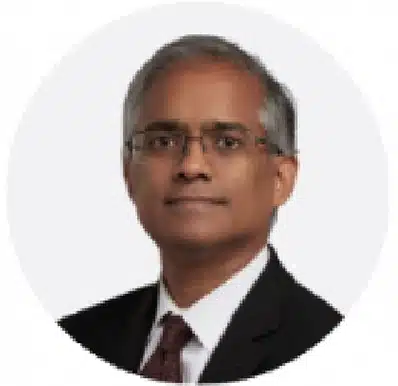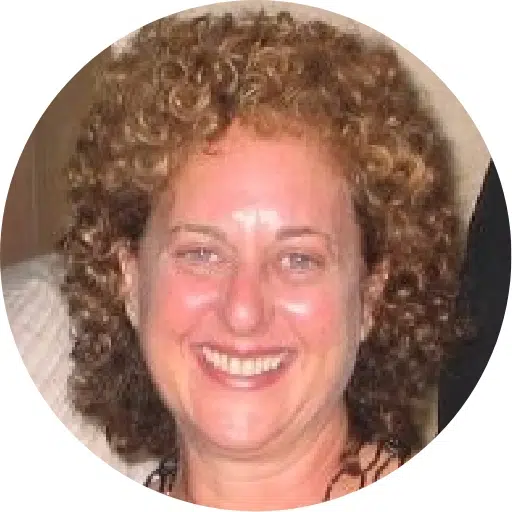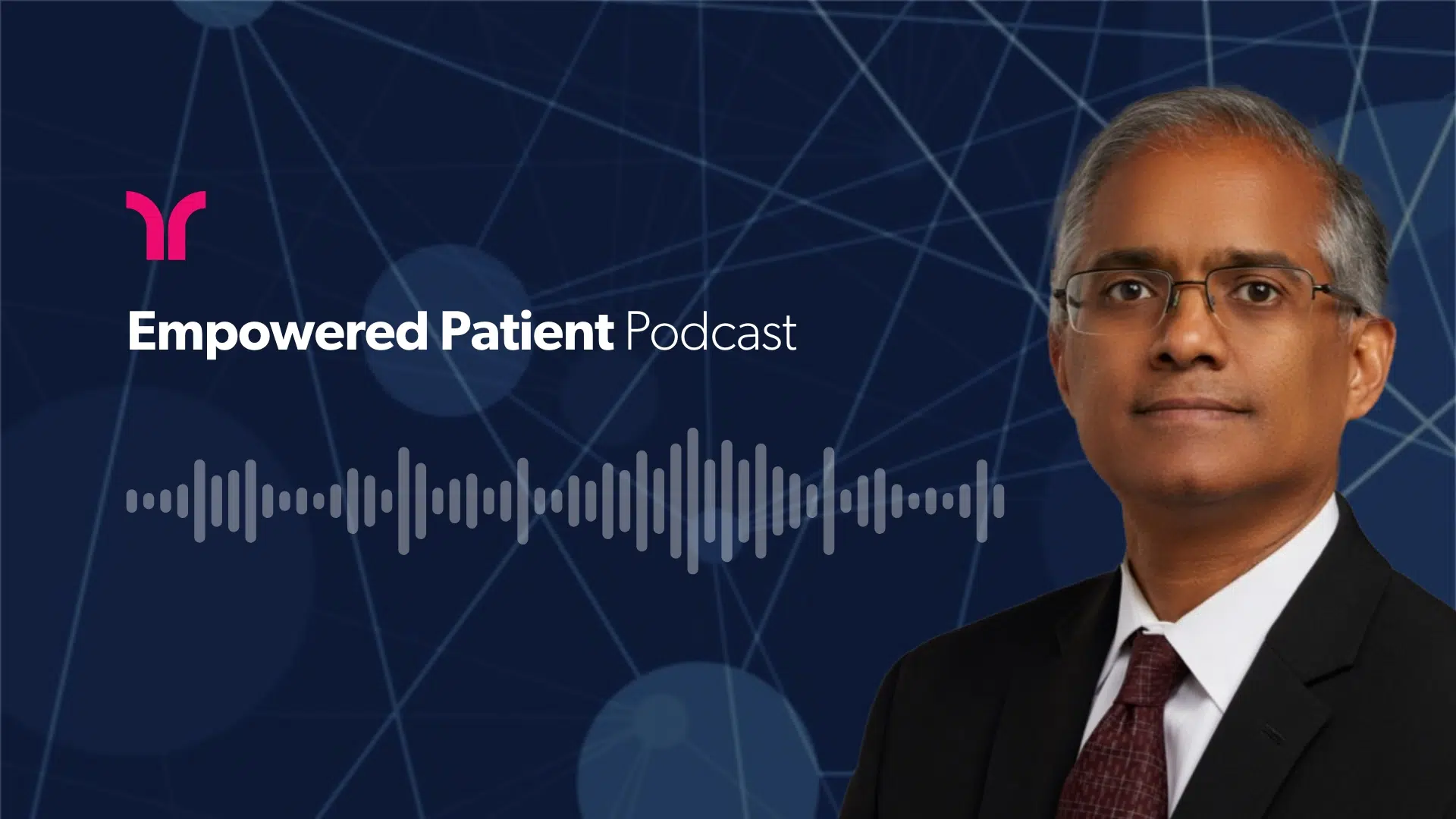FEATURING
 Bala Hota MD
Bala Hota MD
SVP, Chief Informatics Officer, Tendo, Formerly of RUSH
HOSTED BY
 Karen Jagoda
Karen Jagoda
Host and Producer Digital Politics Podcast and Empowered Patient Podcast
Join Dr. Bala Hota, Tendo’s Senior Vice President and Chief Informatics Officer, in this episode of the Empowered Patient Podcast hosted by Karen Jagoda. Together, they discuss the power of technology and data analytics in measuring and improving healthcare quality. Dr. Hota shares insights on how to leverage data to enhance patient care and operational performance and how Tendo’s innovative software is transforming the healthcare landscape.
Tune in to learn more about the role of data in optimizing patient experiences and driving better outcomes!
Dr. Bala Hota is the Senior Vice President and Chief Informatics Officer at Tendo, helping the team on our mission to become the trusted connection between patients, clinicians, and caregivers. With his extensive background as an infectious disease physician, as well as his expertise in epidemiology and public health, Dr. Hota has spent the past 20 years utilizing advanced technology and data to create better quality measurements that result in improved patient outcomes. He is passionate about empowering patients to understand the best pathways for the right care and is committed to challenging the antiquated model of quality systems in US hospitals today.
Get in touch with us today!
It's time to transform the way we approach healthcare. Get in touch with us today and discover the possibilities.
Transcript:
Karen Jagoda: Welcome to the EmpoweredPatientPodcast.com show. I’m Karen Jagoda. My guest today is Dr. Bala Hota. He’s the Senior VP, Chief Informatics Officer at Tendo, tendo.com. And Bala, I want to welcome you to the show today. I appreciate you taking a few minutes to be with us.
Dr. Bala Hota: Great to be here.
Karen Jagoda: Thank you. Tell us about the kinds of services that Tendo offers.
Dr. Bala Hota: Sure. Yeah. So Tendo, our vision is to be the trusted connection between patients, providers, and caregivers, and doing that using a really intuitive and seamless interface to provide that optimum experience. And so the way we approach things is we have a number of different ways that people interact with our application and our software. We have a patient care journey application, which helps patients navigate through complex care pathways. We have an insights offering, which uses a variety of engines to look at electronic record data and claims data to identify cohorts where there could be really opportunities to provide better care, provide better documentation, take action. And then we have an outreach product where we can take those insights and drive through to actions all the way through to the patient, including self-scheduling. So this is all on a common software platform, which allows us to really deploy faster and have configurability, but we’re focusing in on those three main areas.
Karen Jagoda: Have you gotten a lot of surprises when you look at those insights, looking at the larger population?
Dr. Bala Hota: I think so. Healthcare is funny in that it’s … I think as an industry, we don’t leverage the data we have as well as we could be to make patient care better or to really drive better operational performance. And so one of our areas that we focus in very heavily is on quality. We find it’s really hard to measure quality well for hospitals and know how you’re performing because it’s so complex. And so the surprises are often when we use the data to really explain where there’s opportunities to improve or maybe the quality’s really good and helping hospitals see that.
Karen Jagoda: This is also a way to improve revenue, I expect, so that the providers are doing more of what they do best and are avoiding some of the things that are sucking up their time, but not providing the kind of revenue that they need?
Dr. Bala Hota: Yeah, for sure. I think the way we come at it is from the quality perspective. If you’re doing the right thing and you try to optimize the accuracy of capturing that information, the revenue will follow. One of our use cases is around hospital rankings and how do you improve risk adjustment to make sure that you’re getting credit for the quality you’re providing and your documentation is fully accurate. We find revenue increases as a result of that effort. If you’re improving documentation for quality as a health system, you’ll bring revenue along with it by optimizing the accuracy of your records. So there’s also cost savings through better workflows, improving operations through outreach, finding the patients that you want to bring in for better follow-up or for procedures. It can drive growth and drive revenue that way, and the technology supports it in a cost-effective way.
Karen Jagoda: Tell us what are the unique requirements for these providers and clinicians when it comes to healthcare data. I know privacy is a very important concern, but there must be other elements that they’re really concerned about as well.
Dr. Bala Hota: Well, we’re fortunate in that we’ve got a team of really expert technologists and we have a secure cloud-based environment, so we can really work with identifiable data. But I think privacy, making sure third parties really treat data well and have the best security procedures. I think attribution is a big concern. How do you ensure that as you’re looking at particular populations, you’re attributing them to the right providers, to the right facility as you look at it? And so we’re really attuned to that, and that’s a question that we often address with systems as we work with them.
Karen Jagoda: Are you seeing a lot of variations across specialties when it comes to quality or the outcomes that you’re able to measure?
Dr. Bala Hota: Yeah, I think what we see is across facilities, there are differences in the way specialties are ranked, in the way that the quality is delivered. Every hospital is unique, they have particular specialties that have strengths and others that they’re really driving improvements. We also see that the quality of the measures, the way that quality is measured nationally, varies in its strength across specialties. Where cardiology may have really robust measures, but maternal care, less so. So how we can help health systems really understand the quality of care that they’re providing, I think that’s a key part of what we try to do.
Karen Jagoda: And tell us a little bit about the approach you’re taking for user interface, because I get so many comments about doctors not liking keyboards or people having to go between screens. And it seems to me someone’s not integrating some of these solutions very well. So how much attention are you putting on the user interface for that end user?
Dr. Bala Hota: Yeah, it’s a huge concern. Healthcare is just really fragmented. When you look across the solutions that we deploy within a health system, a lot of niche solutions that cover one use case, really multiple screens or applications that take you out of your context. And physicians in particular really don’t want to leave the primary interface that they’re using to provide care. So as we have looked at developing user interfaces, there’s a couple main areas that we are thinking about. When it comes to patients, how to make sure that the user interface is very inclusive and considers accessibility and all the different types of users that we may want to have use the app. Really, user interviews is a key part of our implementation and how we design.
When it comes to providers, thinking about the staff and what role they have and the likelihood that they’re going to be using an interface other than the electronic record. That’s a key part of our decision-making process when we design. And so as a result, we have integration with the EMR and we can send data and analytics back to the EMR for one set of users. We have mobile apps, and the mobile interface is really a key part of how folks can use Tendo’s products. And then we also have web-based applications, which do have their role and are very important for a wide group of healthcare users.
Karen Jagoda: And what about doctor’s notes? I understand that unstructured data is extremely important in many situations, but often times it’s hidden and it’s not easily accessible. So is that also one of the goals that you’ve included in your elements that you’re putting out there?
Dr. Bala Hota: Yeah, absolutely. So for our quality-focused application, our insights product, one of the key pieces that we do is identify comorbidities and identify the severity of illness of patients and help with improvement of risk adjustment for facilities. Notes are a key part of that because a lot of our models for measuring quality, for risk adjustment are based on billing data. And of course your billing claims are based on what you document.
So the way I think about this is electronic record is an enormous rich source of data that includes objective information that the doctor might use, like labs, medications, prior diagnoses, nursing notes, a lot of really structured, very objective information. And then there’s the stuff we write, that physicians write in the record, which some folks have said 80% of the information in the record is in clinical notes that are unstructured. Radiology reports, pathology reports, and you really want to try to build algorithms that incorporate both sets of data.
So the way we approach this is we have really good models that are trained and can use just the structure data, but then we have full natural language processing models that incorporate the notes as well. And by bringing those two sets of data together, you can do a few things really great. You can get a complete picture of the patient and how sick are they, what are their comorbidities, what are the clinically relevant things to take action on? But you can also see what’s in the objective data, the labs, the medications, vital signs that is not present in the notes, and find those documentation gaps. And in this way, you can actually inform a variety of stakeholders, the physicians, clinical documentation improvement staff, others, “Here’s where there’s politically supported information, but it’s not even in the notes.” And that then can drive a lot of really substantial improvements and risk adjustment.
Karen Jagoda: The more you learn about this subject, the more complicated it becomes because of all the data that’s being collected and being reported in some form. So, thanks for that extra level of clarification. I’m wondering what the acquisition of MDsave means for the Tendo brand.
Dr. Bala Hota: I think it really goes for our vision to be this trusted connection between patients, providers, and caregivers. MDsave, what it brings to Tendo is a marketplace, this really robust methodology to understand and make available procedures and services with clear, transparent pricing and make the connection between providers and patients where they can take advantage of those services. MDsave has a very large network with thousands of providers around the country that are providing services with really clear, transparent prices for those bundles of services. And with the Tendo platform now, we can provide that best-in-class experience for patients while they go to really go and have a variety of medical services done, empowering the patient as they go for purchasing decisions. So we’re very excited about the incorporation of MDsave into our overall strategy.
Karen Jagoda: It makes perfect sense, and it really is to me, an indication of how there’s a lot of coalescing going on in this industry with so many different solutions being introduced over the last few years, but now people realize that we need to connect some of the dots. So that’s a really good illustration, I think.
Dr. Bala Hota: Yeah, and we’re really excited about the ability to empower patients. We talked a little bit about insights, but one of the areas in the US that I think we could do a lot better and we’re really excited to bring to market is better quality measures that patients can use. If a patient needs a specific procedure or they need a specific service, do they have an ability to pick a provider with the best understanding of quality for that provider? And the data’s there to build that. And unfortunately, I think we don’t have that currently as a country. So we’re really excited to bring that in the future as part of our offering.
Karen Jagoda: And you’re also creating what you’re calling the omnichannel healthcare model. So tell us a little bit more about how that benefits both the patients and the providers.
Dr. Bala Hota: Yeah, absolutely. I think what COVID showed us and accelerated is that multiple avenues for care, tech enablement of virtual care, and multiple ways to communicate with providers in the healthcare system, it’s here to stay. I think prior to COVID, we were, as an industry, probably very uncertain how would that be received. And what we’ve seen is really high-net promoter scores and convenience. And so that’s part of our roadmap. We want to see that “care where you are” and making those connections between the patient, their family, and the provider through the technology is a key part of the experience. So from that perspective, I think omnichannel avenues for care is really a very exciting aspect for us.
Karen Jagoda: Tell us a little bit about how that might help overcome biases in receiving healthcare and just where someone lives or what their experiences or who their friends and family are.
Dr. Bala Hota: I think there’s a lot of challenges for patients to find that provider that’s a great match for them and do it in a way that’s convenient and a great experience. So technology can really serve to close those gaps. Patients can learn about, in a more comprehensive way, who a great provider for them would be. The convenience of self-scheduling and finding those appointments, that can be made a lot easier. Integration through the EMR that we have enables self-scheduling, and it’s a part of our platform for patients. And then that communication to providers. Virtual care can really help with being able to be at home and have that care and even communicate to your provider asynchronously. So we see technology as a way to bring care more out of the physical space of a clinic and across a wide variety of different venues and settings.
Karen Jagoda: Well, before I let you go, just to follow up with that point, what elements of the design need to be included when you’re talking about creating such both digital, virtual, and real-life healthcare environment? I’m glad we’re focusing on the technology, but what do the providers need to keep in mind when they’re making this shift?
Dr. Bala Hota: Well, I think what we’ve seen I think in the last couple years is there’s certain types of care that lend themselves really well in the current state to virtual care models, but then there’s others where we don’t have the sensors or the devices to do that measurement that you might do in an office for patients. So I think thinking more about the hospital-at-home framework, how do you integrate devices at home and how do you do it in a seamless way? We’re looking at that, and that’s a part of future thinking about this.
What are the things that patients really do need to come in and what’s the right setting of care where you can get patients? Sometimes if we can avoid emergency room visits or have urgent care or even something at home done, it’s a better match to the type and severity of illness to where the patient is. And so the analytics can help with that, but having the ability to have the patient be informed enough to take advantage of that. Those are some of the things. Not every clinical encounter will be virtual, I think, is what we’ve learned and seen. And so being sensitive to that and making sure you’re triaging appropriately.
Karen Jagoda: And do we ever go back to the days when the doctor or the nurse goes to the home of the patient and does an in-house check?
Dr. Bala Hota: I think so. I mean, interestingly, I think new payment models like Accountable Care Organizations and Medicare Advantage where you’re paid for value, it opens up the door. So a lot of innovation in how care is provided because you don’t need that fee-for-service visit. And so then you can really explore, well, how do we maybe bring the doctor to the patient in the right setting? How can the data and analytics help to figure that out and help to prioritize which patients should we maybe do that house call? I think that all opens up the more integrated we are in these different ways.
Karen Jagoda: Thanks to my guest today, Dr. Bala Hota, senior VP and chief informatics officer at Tendo, tendo.com. I’m Karen Jagoda and you’ve been listening to the EmpoweredPatientPodcast.com show. Lik. Like us on Facebook at Empowered Patient Radio. Thanks for listening, and we’ll see you next time.

